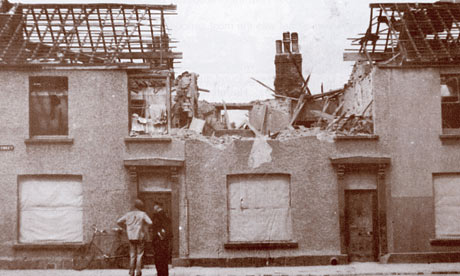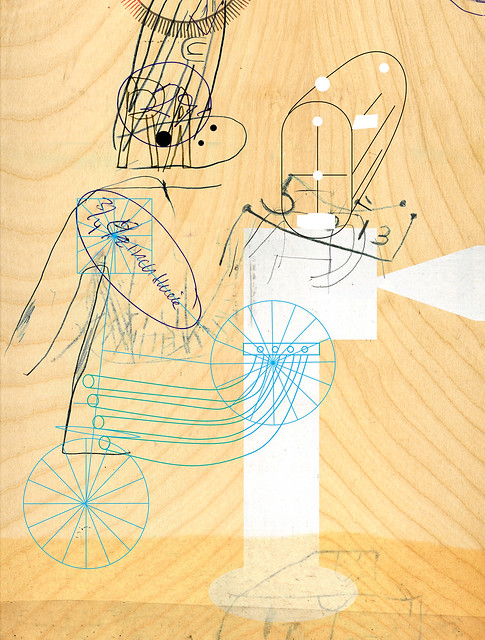 |
| Wartime Theme |
As you can see I have applied shading into the design. Due to the context being about the blitz, I immediately made the connotation of soot and ash. The grainy texture made by a pencil on its side represents this perfectly. I applied this method and then used a wet brush to create a smudge effect. I deliberately made the shading around the destroyed area darker to emphasise that a bomb caused this destruction; so a burnt effect basically. I originally drew the outline in pencil just in case I made a mistake and then went over it in fine liner. Then to put it into the pattern I began duplicating the image, attaching them at each side. I repeated this a couple of times and gradually it built up within the A4 horizontal page. Here is the outcome:
As I described before, I wanted it to appear as though the houses were ascending up a hill from the perspective of the viewer. The monochrome and the endless amount of roof tops and windows makes this piece look very dense. The destroyed areas of the terrace houses reveal a living room window on the street behind. This makes the pattern almost hypnotic and abstract. It forces the viewer to peer in closer.
This pattern further represents the context due to the catastrophic nature of WWII. It serves almost like a memorial to the victims taken by the blitz because the image appears so vast and infinite; symbolizing the almost countless deaths. It also could symbolize society and what human nature is capable of; even worse in mainland Europe where innocents were murdered by gas according to their race. War is a terrible thing, and the events that happened during WWII must definitely never happen again.
Now for the 'historic buildings' theme. As I had been working closely with the theme of Pear Mill, I thought it appropriate to incorporate it into this cover somehow. Due to the term given to work upon, 'buildings', I realised that the cover had to be something universal; something that applied with most standard buildings. When I think of a building, I imagine a giant rectangular block with windows. The windows I then thought were a great idea. When I found this idea, I immediately remembered the album cover Physical Graffiti, by Led Zeppelin:
 |
| Physical Graffiti, Led Zeppelin |
This influenced my idea of having the pattern just as windows. In accordance to Pear Mill, I decided to draw a segment of the windows into my sketchbook:
 |
| Buildings Theme |
Yet again, compared with my 'wartime' pattern, it appears rather densely populated with the amount of windows there are. It appears almost like a 'super factory'! I believe it appears abstract as well as representational because of the same reason (the size). Its difference with the 'wartime' cover is that it has colour. Colour is more so necessary in this one because of the burgundy/redness that is associated with industrial architecture. The weathered red bricks that crafted these working spaces symbolize how huge the buildings were.
I believe this relates to the context of the brief well because the buildings that were made during the industrial revolution still stand today and so keep the memory of what was. Their dominance in the landscape pushes across the message that everything has a history, and that these histories will never be altered or forgotten. Even if Joyce cannot remember, the building physically remains present.





































